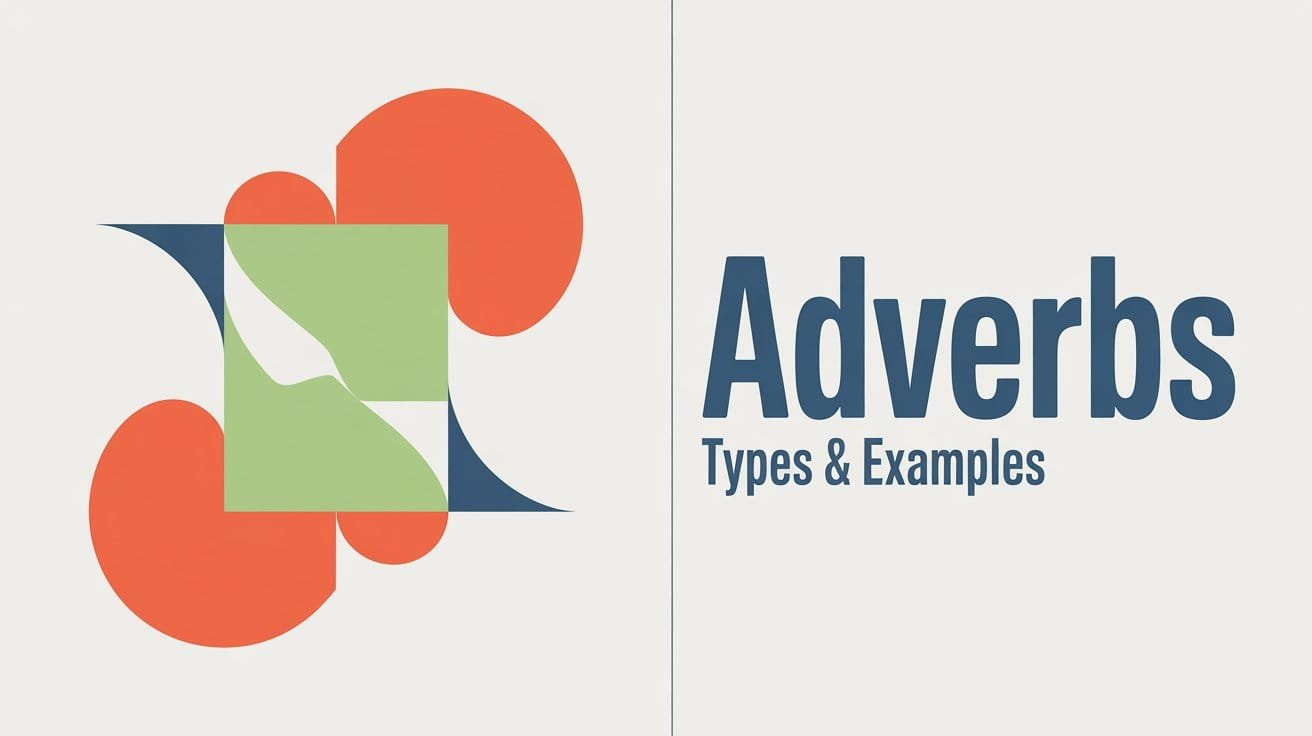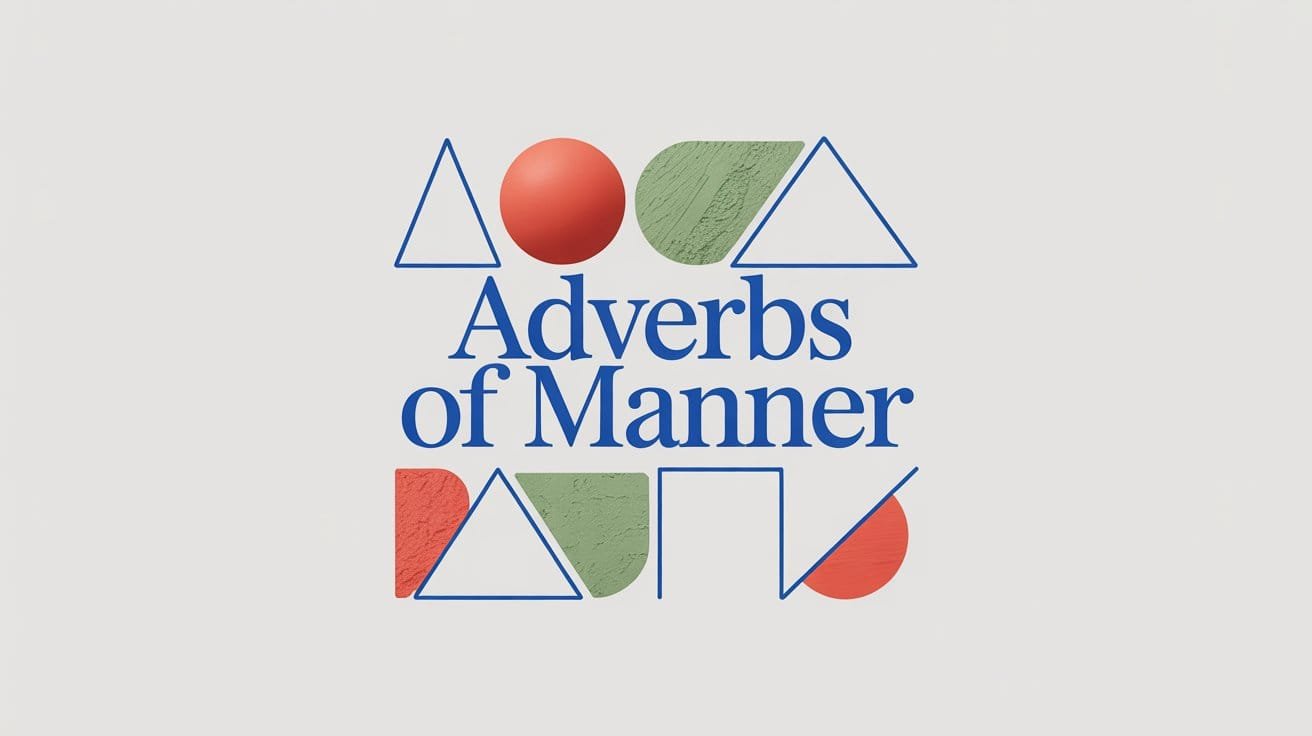Imagine you’re at a party, and someone asks, “When did you arrive?” You could say, “I arrived yesterday,” “I arrived early,” or even “I arrived just in time to catch the sunset.” See how these simple words ‘yesterday,’ ‘early,’ and ‘just’ make your story come alive? These words are adverbs of time.
In this article, we’ll help you explore adverbs of time in English grammar, making it simple and easy to understand with real-life situations and examples.
What Is an Adverb of Time?
An adverb of time is a word that describes when an action happens. It provides information about the timing or frequency of an event in a sentence. In English, adverbs of time help answer questions like “when?” or “how often?” These adverbs can indicate specific moments, durations, or frequency.
Common Adverbs of Time Examples
Below are some of the common adverbs of time examples:
- Today: “Jack and Ruby will visit the museum today.”
- Yesterday: “She called me yesterday.”
- Tomorrow: “We are leaving for our vacation tomorrow.”
- Always: “He always arrives early.”
- Often: “She often goes to the gym.”
- Usually: “I usually have coffee in the morning.”
- For: “We have been friends for years.”
- Since: “She has lived here since 2012.”
- Temporarily: “He will stay here temporarily.”
- Soon: “I’ll call you soon.”
- Nowadays: “Nowadays, people rely on technology.”
- Recently: “I read that book recently.”
Types of Adverbs of Time
Let’s delve deeper into the different types of adverbs of time and explore how they function in English grammar:
Specific Time Adverbs
Let’s start with the basics- Specific time adverbs.
- “These adverbs point to a precise moment in time, helping you answer the question ‘when?’
- They provide specific details about when an action occurred.
- Common specific time adverbs include “today,” “yesterday,” “tomorrow,” “now,” “tonight,” “soon,” “later,” “immediately,” and “then.”
Examples:
- “I’m going to the dentist today.”
- “She called me yesterday.”
- “We’ll leave for the concert tomorrow.”
- “I’m busy right now.”
- “Let’s meet up tonight.”
Frequency Adverbs
- These adverbs indicate how often an action occurs and answer the question “How often?”
- They provide information about the frequency of an action.
- Common frequency adverbs include “always,” “often,” “usually,” “sometimes,” “rarely,” “seldom,” “never,” and “frequently.”
Examples:
- “He’s always on time.”
- “She often goes for a jog.”
- “I usually have salad for lunch.”
- “I sometimes watch movies on weekends.”
- “He rarely eats fast food.”
Duration Adverbs
- These adverbs describe how long an action lasts and answer the question “How long?”
- They provide information about the duration or period of time an action covers.
- Common duration adverbs include “for,” “since,” “temporarily,” “permanently,” “briefly,” “momentarily,” and “continuously.”
Examples:
- “They’ve been married for 20 years.”
- “She has worked here since graduation.”
- “He’s staying here temporarily.”
- “The store is closed permanently.”
- “He paused momentarily before responding.”
Relative Time Adverbs
- These adverbs relate actions to a broader time frame and answer the question “in relation to when?”
- They provide context about when an action happened compared to other events or time periods.
- Common relative time adverbs include “nowadays,” “currently,” “soon,” “previously,” “recently,” “before,” and “after.”
Examples:
- “People rely on smartphones nowadays.”
- “I’m currently studying for exams.”
- “They’ll arrive soon.”
- “He had never traveled abroad previously.”
- “I saw her recently.”
Placement of Adverbs of Time
The placement of adverbs of time in a sentence is important because it can affect the meaning and clarity of your sentence. Adverbs of time can be positioned at the beginning, middle, or end of a sentence, depending on the context and the specific adverb being used. Let’s explore each placement in detail:
1. Adverbs of Time at the Beginning of a Sentence:
- When adverbs of time are placed at the beginning of a sentence, they often set the tone or context for the rest of the sentence. They provide a clear indication of when the action took place.
Examples:
- Yesterday, I went to the park.
- Now, let’s begin the meeting.
2. Adverbs of Time in the Middle of a Sentence:
- Adverbs of time can also be placed in the middle of a sentence, usually between the subject and the verb. This placement is common when the adverb relates to the duration of the action or when it interrupts the main clause.
Examples:
- I visited the library yesterday morning.
- They always submit their assignments on time.
3. Adverbs of Time at the End of a Sentence:
- Adverbs of time can be positioned at the end of a sentence, particularly when they provide additional information about the action. This placement is common for adverbs of frequency and relative time.
Examples:
- He arrives at the office early every day.
- She called me recently.
It’s important to note that not all adverbs of time can be placed in any position within a sentence. Some adverbs have specific placement rules:
- Adverbs like “always,” “usually,” and “often” are typically placed before the main verb in a sentence.
- Example: I always wake up early.
- Adverbs like “just,” “already,” and “still” are often placed before the main verb but after the auxiliary verb (if there is one).
- Example: She has just finished her homework.
- Adverbs like “today,” “tomorrow,” “yesterday,” and “now” are commonly found at the beginning or end of a sentence.
- Examples: Yesterday, we visited the museum. I’ll call you back now.
Understanding the appropriate placement of adverbs of time can help you convey your message clearly and ensure that your sentences are grammatically correct. It’s important to consider the context and the specific adverb you’re using when deciding where to place it within a sentence.
Real-Life Application
Real-life application of adverbs of time involves understanding how these grammatical elements are used in everyday situations, conversations, and scenarios. Let’s explore some common real-life applications to demonstrate how adverbs of time enhance communication:
1. Job Interviews:
- Scenario: You’re in a job interview, and the interviewer asks about your punctuality and dedication.
- Application: You can impress the interviewer by using adverbs of time to highlight your reliability. For example, “I have consistently met deadlines since I joined my previous company, and I always strive to improve my performance.” In this response, “consistently” and “always” are adverbs of time that emphasize your commitment to punctuality and improvement.
2. Making Plans:
- Scenario: You’re making plans with friends for the weekend.
- Application: Adverbs of time help you specify when you’re available. For instance, “I’m free on Saturday afternoon” or “Let’s meet up next Friday evening.” These adverbs like “Saturday,” “afternoon,” “next,” and “evening” clarify the timing of your availability.
3. Business Meetings:
- Scenario: You’re scheduling a business meeting with colleagues.
- Application: Using adverbs of time in emails or discussions can ensure everyone is on the same page. For instance, “Let’s schedule the meeting for Tuesday morning at 10 AM” or “We need to complete the project by the end of this week.” Here, “Tuesday,” “morning,” “10 AM,” and “end of this week” serve as adverbs of time, offering precise details about scheduling.
4. Storytelling:
- Scenario: You’re sharing a personal experience or story.
- Application: Adverbs of time play a crucial role in storytelling, helping you convey the sequence of events. For example, “First, I woke up early in the morning. Then, I had breakfast and left for work. Suddenly, it started raining, so I had to take shelter.” In this narrative, adverbs of time like “first,” “then,” and “suddenly” help structure the story’s timeline.
5. Making Appointments:
- Scenario: You’re scheduling a doctor’s appointment.
- Application: Adverbs of time assist in setting appointment times. For instance, consider scheduling appointments: “I’d prefer to book an appointment for Friday afternoon” or “Are there any open slots for next week?” In these examples, “Friday afternoon” and “next week” act as adverbs of time, precisely indicating when you wish to schedule the appointment.
Frequently Asked Questions (FAQs) about Adverbs of Time
1. What are adverbs of time?
Answer: Adverbs of time are words that provide information about when an action takes place. They answer questions like “When?” or “How often?” and help specify timing, duration, or frequency in a sentence.
2. What are some common examples of specific time adverbs?
Answer: Common specific time adverbs include “today,” “yesterday,” “tomorrow,” “now,” “tonight,” “soon,” “later,” “immediately,” and “then.”
3. Can adverbs of time be placed anywhere in a sentence?
Answer: The placement of adverbs of time can vary depending on the context and the specific adverb. These adverbs have the flexibility to appear at the start, in the middle, or at the end of a sentence. Consider these examples: “Yesterday, I went to the park” (positioned at the beginning), “I have been studying English for three years” (placed in the middle), and “He arrives at the office early every day” (found at the end).
4. What are some common adverbs of frequency?
Answer: Common adverbs of frequency include “always,” “often,” “usually,” “sometimes,” “rarely,” “seldom,” “never,” and “frequently.”
5. What’s the difference between “for” and “since” as duration adverbs?
Answer: “For” is used to specify the duration of an action up to the present or a specified point in the future. “Since” is used to indicate the starting point of an action and usually refers to a specific time in the past.



